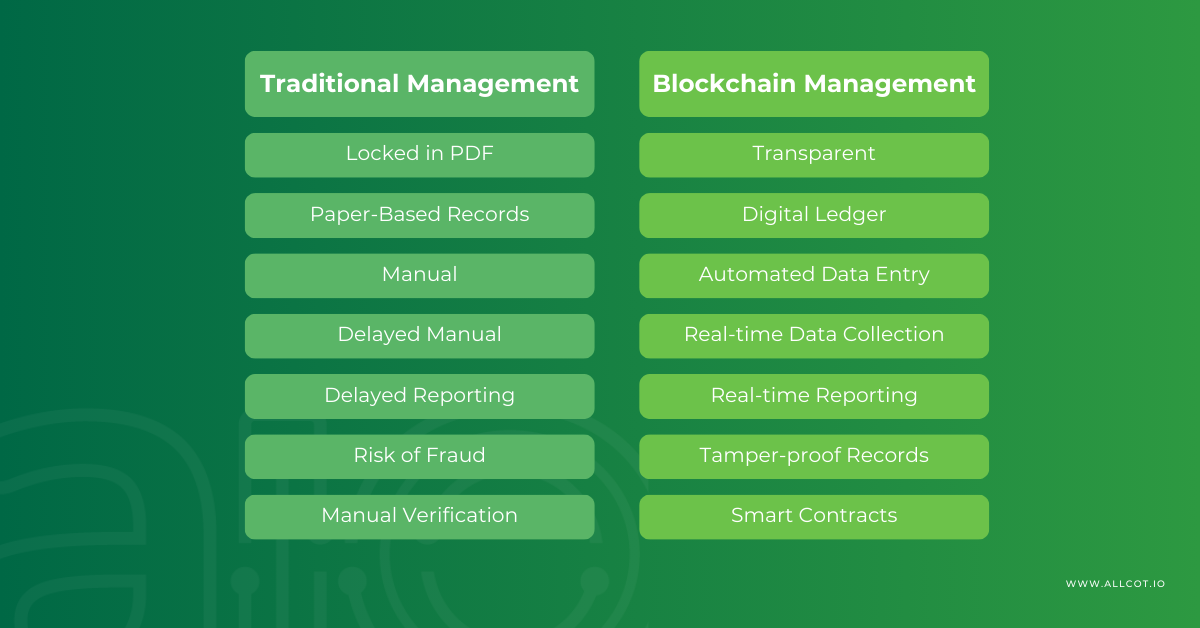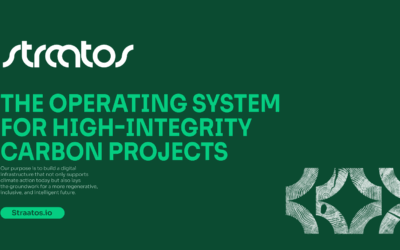In recent years, blockchain technology has emerged as a revolutionary innovation with the potential to transform various industries. But what exactly is blockchain, and how does it compare to traditional carbon management systems?
Blockchain is a decentralized digital ledger that records transactions across multiple computers in a way that ensures security, transparency, and immutability. Each block in the chain contains a list of transactions, and once a block is added, it cannot be altered without altering all subsequent blocks. This technology is the backbone of cryptocurrencies like Bitcoin but has numerous other applications beyond digital currency. On the other hand, traditional management systems, which rely on centralized databases and intermediaries to validate and record transactions. These systems, while functional, often face issues related to security, transparency, and efficiency. Blockchain technology offers an innovative alternative by decentralizing data management and providing a more secure and transparent way to handle transactions. Let’s dive in into more detailed comparisons:
- Traditional systems often store records in formats like PDFs, which are static and difficult to modify. While this ensures data integrity to some extent, it also means that accessing and verifying information can be cumbersome and time-consuming. Additionally, any updates or changes require creating new documents, which can lead to version control issues and confusion. Blockchain technology, on the other hand, provides a transparent system where all transactions are visible to authorized participants. Every transaction is recorded in a way that cannot be altered or deleted without consensus. This transparency ensures that all parties have access to the same information, reducing the likelihood of disputes and enhancing trust among stakeholders.
- Traditional systems often rely on paper-based records, which are prone to damage, loss, and human error. Managing and storing these records can be costly and inefficient, and retrieving information from paper records can be a slow and labor-intensive process. Blockchain replaces paper-based records with a digital ledger that is decentralized and immutable. This ledger is stored across multiple nodes in the network, ensuring that data is always available and secure. Digital records can be easily accessed, searched, and verified, making the entire process more efficient and reliable.
- In traditional systems, data entry is often a manual process, which is time-consuming and prone to errors. Manual entry can lead to inconsistencies, delays, and inaccuracies, impacting the overall efficiency and reliability of the system. Blockchain enables automated data entry through smart contracts and IoT devices. These automated systems can collect and record data in real-time, reducing the risk of human error and ensuring that information is accurate and up-to-date. Automation also speeds up processes and reduces operational costs.
- Traditional systems often involve manual data collection processes that are slow and subject to delays. Data might be collected at intervals, leading to outdated information and slower decision-making. Blockchain allows for real-time data collection, providing instant updates and insights. This real-time capability is particularly beneficial in dynamic environments where timely information is crucial. For example, in carbon offsetting, real-time emissions data can help organizations promptly offset their carbon footprint.
- Reporting in traditional systems is usually delayed due to the time required for data collection, verification, and compilation. These delays can affect the responsiveness of an organization and its ability to make informed decisions quickly. With blockchain, reporting can be done in real-time, offering immediate insights and transparency. Real-time reporting enables organizations to act swiftly on the latest data, improving efficiency and responsiveness. This capability is invaluable for monitoring compliance, performance, and other critical metrics.
- Traditional systems are vulnerable to fraud and unauthorized alterations. Centralized databases can be hacked, and records can be manipulated, leading to significant financial and reputational damage. Blockchain’s decentralized and cryptographic nature makes it inherently secure. Once a transaction is recorded on the blockchain, it is virtually impossible to alter it without the consensus of the network. This tamper-proof characteristic significantly reduces the risk of fraud and ensures the integrity of the data.
- In traditional systems, verification processes are often manual and can be slow and costly. These processes rely on intermediaries and multiple layers of validation, which can introduce errors and delays. Blockchain introduces the concept of smart contracts, which are self-executing contracts with the terms directly written into code. Smart contracts automatically enforce and verify the terms of an agreement, eliminating the need for intermediaries and reducing the risk of human error. They enhance efficiency and reliability by ensuring that all parties comply with the agreed-upon terms.
At ALLCOT IO, we leverage blockchain technology in our Active Offsetting product. By connecting directly with sensors and IoT devices, we gather real-time emissions data, enabling organizations to offset their emissions promptly. The blockchain-based mechanism ensures that all transactions are transparent and traceable, providing a reliable and efficient solution for carbon offsetting. For a more detailed look at our Active Offsetting use case, please click here. At ALLCOT IO, we remain at the forefront of this technological revolution, leveraging blockchain to enhance our sustainability initiatives and deliver value to our clients.




